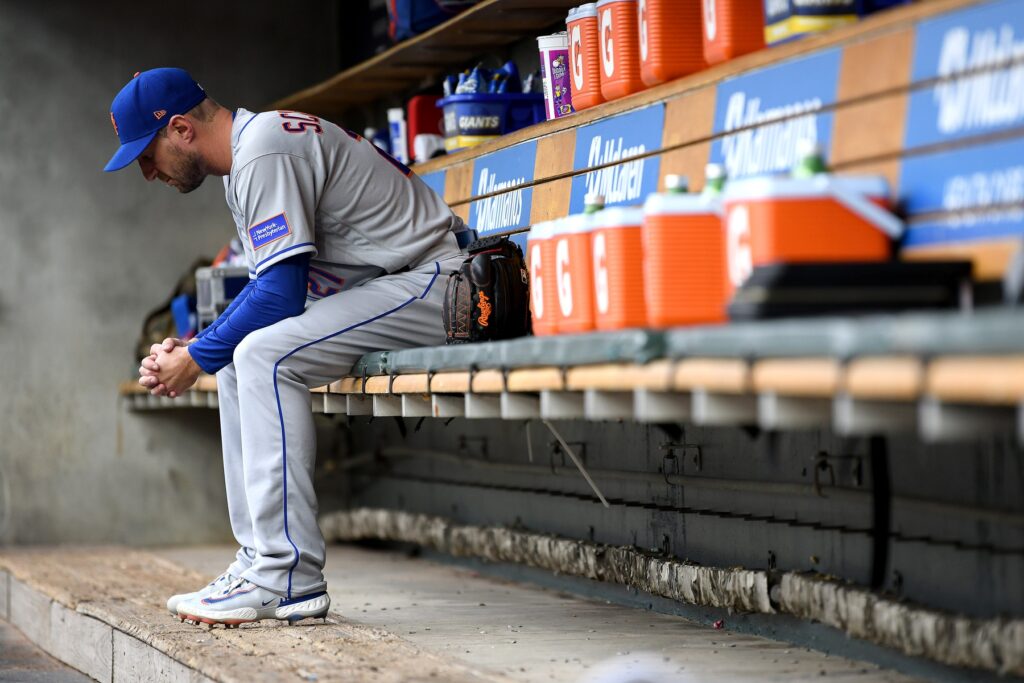It’s more evident nowadays the importance of having a dominant, innings eating ace, on the staff. With hitters being more adept at launch angle and hitting home runs, teams need players that can consistently prevent this from happening and shut down opposing lineups.
With that comes some serious risk. This risk is not just limited to one or two years, teams might have to deal with the onset of their expenditure for close to a decade. Not only can these pitchers get hurt, but these teams are allocating their money to a volatile investment. While the upside of a solidified ace is second to none and the development of pitching being thinner, this is still risky business.
Spending on Pitchers is a Risky Business
3 Teams that Spent Big Money on Pitchers
The New York Mets won over 100 games in the 2022 regular season. Despite an early first-round exit at the hands of the San Diego Padres, the team was filled with talent while competing in a very tough NL East. They felt like they need a little more.
The other New York team, the Yankees, is coming off a successful season themselves. They managed 99 regular season wins and a playoff appearance in 2022, but even they felt like they needed a little more after another loss at the hands of the Houston Astros.
The Texas Rangers, a team that has been treading along since the mid-2010s, felt that they needed to up their aggression when it comes to free agents. Before the 2022 season, the club locked up two infielders, Corey Seager and Marcus Semien to long-term contracts.
What did these teams do before the 2023 season? They invested money, in pitchers…. some are which are old and come with a ton of risk.
Justin Verlander, 40, just came off a Cy Young season with the Astros. The Mets, wisely let Jacob deGrom walk, but they replace one risky asset with another in their signing of Verlander. He has just recently come off the injured list after missing the entire month of April after suffering a low-grade teres strain.
Their other aging ace, Max Scherzer, has recently been dealing with neck spasms which caused him to be scratched from his most recently scheduled start against the Cincinnati Reds. Being that he’s 38, the Mets might have to massage their way through this issue as well.
Who was the team that signed Jacob deGrom? The Rangers. He is now currently on the injured list with elbow issues. The team is managing him with the utmost concern because of his age, injury history, and contract. They don’t want to rush him back due to a higher risk of re-injury.
The Yankees have issues of their own when it comes to pitching injuries. They signed free agent left-hander, Carlos Rodon, to a six-year deal worth 162 million dollars. The oft-injured 30-year-old has been battling injuries this season again. He was shut down initially with a forearm injury which has now gradually become a back issue delaying his start to the 2023 season.
Is Baseball Entering a Transition Period When It Comes to Pitchers?
The overwhelming importance placed on high-velocity fastballs and higher-velocity breaking balls leaves pitchers more prone to suffer injuries.
Baseball teams are businesses. After a thorough analysis of the strengths and weaknesses, businesses either maintain the status quo or change up the philosophy for the betterment of their product.
Pretty soon, the idea of the “starting pitcher” is going to be a thing of the past. The entire sport will change the way they manage games and bring guys in to get outs. We are slowly starting to see the transition occur as more and more pitchers are throwing fewer pitches and getting pulled earlier in games.
This is a wholesale philosophical change, but it looks like it would be mutually beneficial for both the teams and the pitchers. The player benefits because fewer pitches bring less stress on the arms. The team is benefitted because they don’t have to make a risky financial investment in a position of high volatility.
This would have to start as early as the high school level. The emphasis would still be placed heavily on velocity, but the need for a pitcher to labor their way through a game would become irrelevant. The approach becomes about getting six to nine outs in the most effective way possible and then handing it off to the next guy.
The Tampa Bay Rays, the team at the vanguard of league-shifting decision-making, brought the first “opener” to the scene back in 2018: the idea of a relief pitcher pitching the first inning or two, then sending it off to the “bulk” guy to eat the next four or five. Sometimes, teams will just piece the game together by having five to six pitchers that night.
Organizations can focus their financial attention on position players. They are easier to forecast and allow the team more flexibility as teams can move a shortstop to second base or an infielder to the outfield.
While it’s tough to rely on multiple arms to all have their best stuff on that night, it presents a safer future for both teams and players.
Expect to see this shift in the game of baseball. It may come as soon as within the next decade as teams are always looking to stay ahead of the shift.
Main Image: Lon Horwedel-USA TODAY Sports



